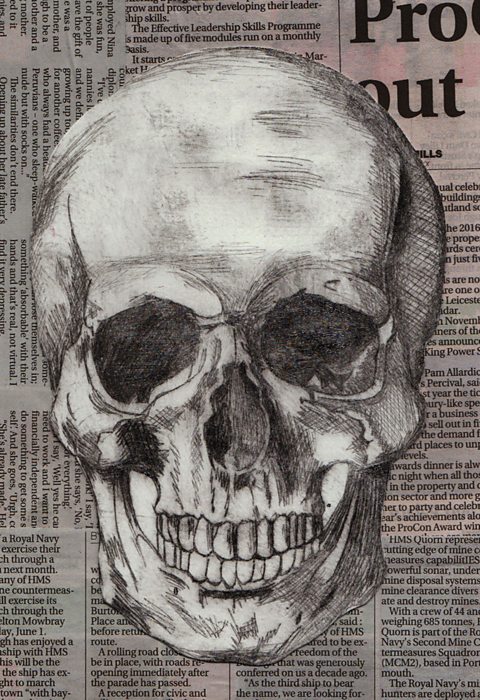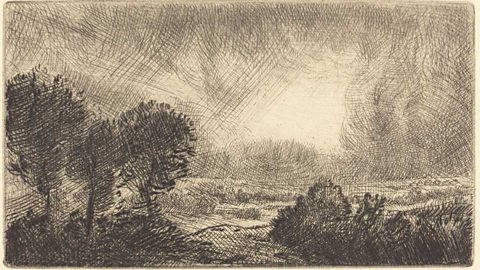Etching process
Etching

Etching is printing produced by etching patterns, shapes and designs into the surface of a metal or acrylicA paint or ink made from a mix of pigment and a fast-drying liquid plastic plastic plate. The ink collects in the engraved areas that are scratched into the surface.
To produce an etched print:
- Scratch an image or design into the surface of the plate.
- Apply colour by rolling ink onto the etched surface.
- Wipe the surface so that only the ink collected in the scratched areas is left.
- Carefully place paper on top of the inked sheet.
- Use a printing press to apply pressure and lift the image onto paper.
Some artists use acid to erode a metal plate. The acid cuts into the unprotected parts of a metal surface to create an intaglio (incised) design in the metal.
Use metallic card to create an etching plate. Use an empty ballpoint pen to draw a design into the surface of the metallic card. Apply ink to the surface and wipe it off so that ink collects in the engraved lines. Place paper on top of the inked metallic card and use a printing press to apply pressure and lift the image onto your paper.
Uses of etching

Etching is used for fine art prints and illustrations. It is used for small to medium batches of prints.
The most successful etchings can be complicated designs. They can be made using one colour or a number of different colours.